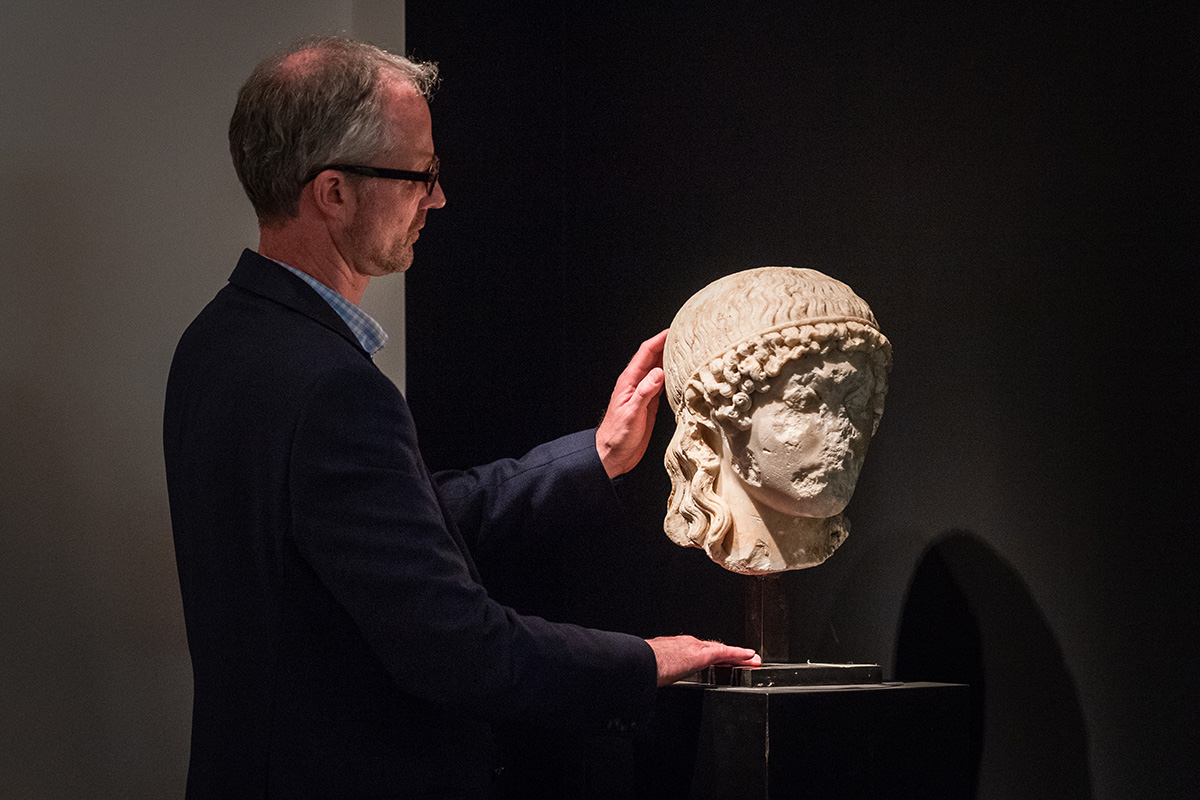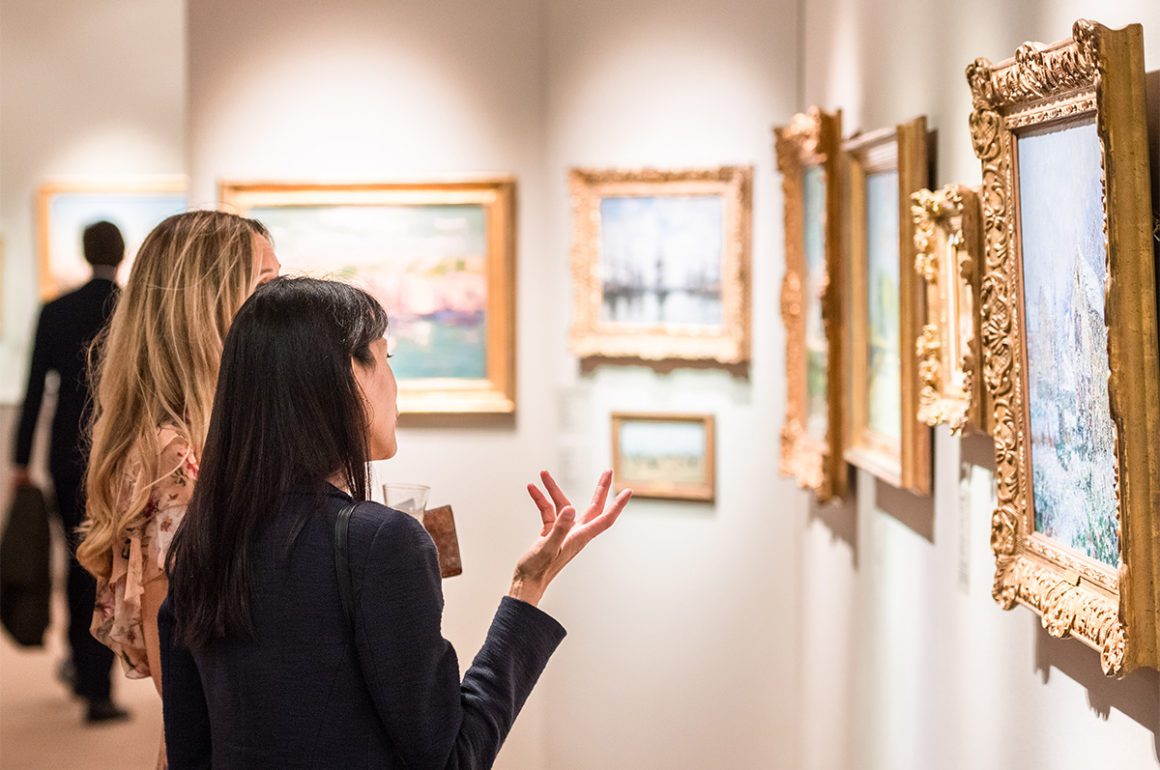
Masterpiece London, 2019. Photograph by Ben Fisher. Courtesy of Masterpiece
In his first column for LUX, art collector, advisor and chairman of Masterpiece London Philip Hewat-Jaboor discusses the joys of discovering art and design objects through their materials

Philip Hewat-Jaboor. Photograph by Danny Evans
I’m always intrigued to discover what brings people to works of art, and what sets their collecting in motion. Over the years, one of the most beguiling ways I’ve found to draw people in, is to look at an artwork’s materials and explore how it has been made. What does the texture and surface of the materials tell us? What meaning and significance do those materials hold? What cultural and historical value do they have? Whether it’s precious stones, marble, porcelain, pigment or wood, it’s interesting to think about how the artist has transformed a raw material into something full-formed and to look for the beauty in that process. Materials transcend disciplines, cross continents, and evolve through time and when it comes to beginning your own collection, it’s a brilliant place to start.
Personally, I’m obsessed by coloured ornamental stones, and by that I mean the stones that were first quarried by the Romans in Egypt and other parts of the Roman Empire, which became incredibly prized as both building materials and materials for making works of art. I take great pleasure in looking at how these materials are used and reused over the course of history. For example, you might be looking at a 18th century vase made out of Egyptian porphyry (my favourite material) but whilst it’s an 18th century object, it was probably made out of a 2nd or 3rd century column that had been abandoned in the Renaissance or whenever, dug up from the excavations in Rome and turned into another object. There’s a wonderful sense of continuity, and doing this kind of research is a fantastic way of not only learning more about the object itself, but also history.
Follow LUX on Instagram: luxthemagazine
There are then the contemporary artists and designers who are thinking about new ways of using ancient materials such as stone. There are designers and artists at David Gill, for example, who are incorporating these wonderful, ancient, coloured stones into contemporary furniture and in doing so, they are bringing new life to the material. In this sense, I’m quite anti the division between traditional and contemporary art because everything looks backwards and forwards. In my opinion, things are either good or bad, stimulating or indifferent, whether they were made yesterday or 5,000 years ago.

Galerie Chenel at Masterpiece London 2019, Ben Fisher Photography, courtesy of Masterpiece
It’s also interesting to consider what inspires the rebirth of a particular material. For example, I’ve been thinking about how there’s been a trend for refurbishing kitchens and bathrooms in the last ten years, and incorporating coloured marbles into new designs. There’s also the fact that each slice of marble, not all marbles but many of them, will be totally unique. So if you’re making a limited edition of five coffee tables, each one will be different and I think that’s really appealing to both the creator and the modern consumer.
Read more: Olivier Krug on champagne and music
Lately, there has also been a trend, or at least a growing interest in more sustainable craft processes, but the interesting thing is that many of these artists and designers are already using historic materials, which is in itself sustainable, but in my opinion, it also imbues the contemporary object with more of a soul. For example, Sebastian Brajkovic, a fantastic artist at David Gill Gallery, made a wonderful side-table out of white marble combined with some artificial marble and other bits and pieces. It’s a strikingly contemporary object, but it is modelled on a Roman sarcophagus.
This past year, in particular, has encouraged people to think about how they want to live, and what might bring their lives comfort, which naturally impacts what they are choosing to buy or collect. I personally think being surrounded by beautiful objects is a very important part of life, and can bring people so much joy.
So where to begin with all of this? Visiting museums, galleries, art fairs and even country houses is a fantastic way to discover and pique interest in new eras and disciplines. Exhibitions even have the power to kickstart entire collecting trends. For example, Treasure Houses of Britain was a great show that took place at the National Gallery in Washington in 1985, showcasing paintings, furniture and works of art from British country houses. The exhibition had such an inspirational effect that it launched an Anglo-manic wave in American collecting in the 80s.
When I reflect upon my own collecting journey, I think how fortunate I was that my grandfather was a collector and that he would let me handle his Chinese ceramics collection. This close-up experience with a material is not something you often get at a museum, but with his passion and trust, I had the opportunity to really look at, appreciate and observe the material and craftsmanship.
In the same way, art and design dealers often want to share their passion for their speciality with potential clients. My advice to new collectors is to actively start conversations, ask questions, read, listen, research and build your knowledge. Search for beauty, great craftsmanship, and ultimately, allow yourself to be guided by your instincts.
Philip Hewat-Jaboor is Masterpiece London’s Chairman of the Fair.
This year’s edition of Masterpiece London will take place online with smaller-scale live activations in London in June. For updates and online events, visit: masterpiecefair.com







Recent Comments